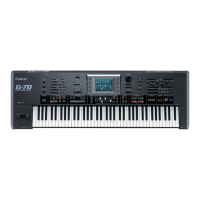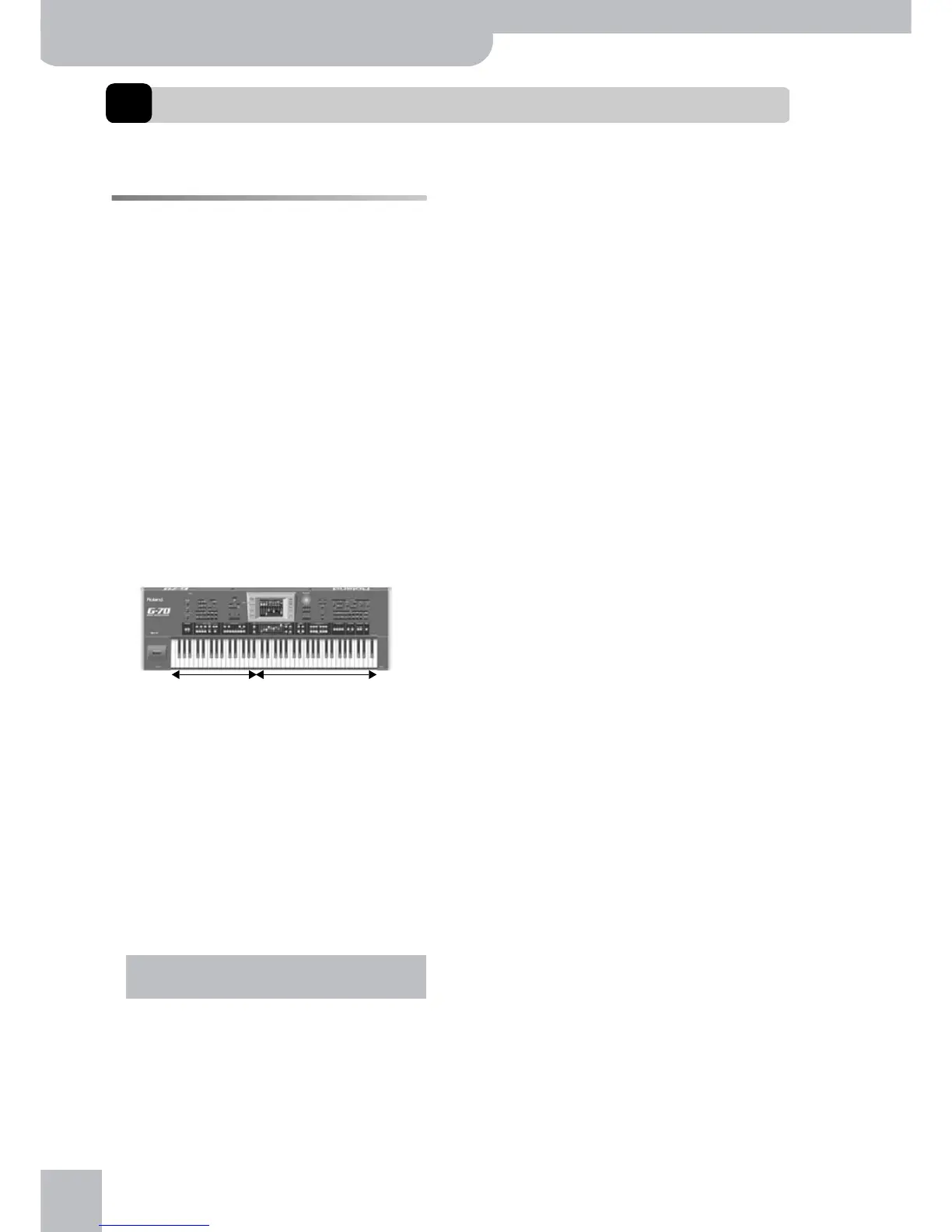Quick Start
24
r
G-70 Music Workstation
3. Quick Start
In this chapter, we will scratch the surface and walk you through its major sections.
The general idea
Your G-70 is several instruments in one. There are
three main sections you can use for playing live.
A
Keyboard parts:
This section consists of parts you need to play via the
keyboard, hence the name “Keyboard”. The G-70 pro-
vides seven Keyboard parts, six of which can be used
simultaneously: UP1, UP2, UP3, LW1, LW2 and MBS.
“UP” stands for “Upper” and refers to the right half (if
there is a split). “LW” refers to “Lower”, and thus to
the left half. “MBS” is short for “Manual Bass”, i.e. a
monophonic bass part whose notes depend on the
chords you play.
There is no Manual Drum part, because any of the
parts just mentioned can be used to play a Drum Set.
The seventh part, “MELODY INT”, is what computer
buffs would call a “cross-platform part”: it belongs to
the Keyboard section but it is in part controlled by
the Arranger. See “Melody Intelligence” on page 76.
B
Arranger/Style section:
The Arranger is your backing band. It plays an accom-
paniment (called Music Style). In a way, the Arranger
works like a drum machine because it uses accompa-
niment patterns.
Unlike a drum machine, however, you can easily
select the desired pattern while playing play. So you
do not need to program the order in which you
intend to use the patterns. Furthermore, the Arranger
not only provides a rhythm section but also chords,
guitar and synthesizer riffs, and so on. The accompa-
niment can be transposed in realtime. All you have to
do is play a different chord (usually with your left
hand).
C
Recorder section:
That’s how it’s called on the front panel, so we’ll stick
to it. This section actually encompasses a 16-track
sequencer, a straightforward MIDI recording func-
tion, and a very sophisticated Standard MIDI File
player with a host of all realtime control functions.
You can add vocals and harmonies to your music
using the Vocal Harmonist function (page 42).
Left hand:
Arranger control
Right hand: melody
(Keyboard parts)

